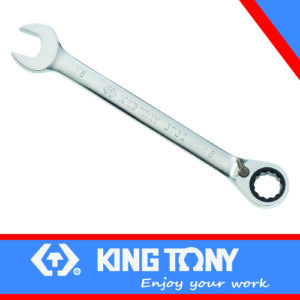Ratcheting spanners, also known as ratcheting wrenches, are advanced hand tools designed for efficient and continuous fastening or loosening of nuts and bolts. Here’s a detailed overview:
Features:
- Ratcheting Mechanism:
- Internal Gear System: Ratcheting spanners feature an internal gear mechanism that allows the tool to turn fasteners without needing to remove and reposition the wrench. The gear mechanism permits continuous rotation in one direction while maintaining grip on the fastener.
- Switch Mechanism: A switch or lever on the tool allows users to change the direction of the ratchet, enabling both tightening and loosening functions.
- Closed-End Design:
- Box-End Head: The working end of a ratcheting spanner usually has a closed loop (box-end) that fits around the nut or bolt, which can include various profiles like 6-point, 12-point, or other specialized designs for better grip.
- Materials:
- Construction: Typically made from high-strength steel or chrome vanadium, providing durability and resistance to wear and tear.
Uses:
- Efficiency: Ideal for tasks where continuous turning is needed without needing to reposition the wrench. This makes it particularly useful in tight spaces or for fast assembly and disassembly.
- Versatility: Commonly used in automotive repairs, mechanical work, and general maintenance tasks.
Advantages:
- Speed: Allows for quicker fastening or loosening compared to traditional wrenches, as it does not require constant repositioning.
- Convenience: The ratcheting mechanism makes it easier to work in confined spaces where movement is limited.
Ratcheting spanners are valuable tools for both professional and DIY users, offering efficiency and convenience for various fastening tasks.
Showing 29–56 of 122 results



























